READY TO GET STARTED?
REQUEST A FREE ESTIMATE
Fill out the form below or call (888) 466-7849 for a free, no-obligation estimate.
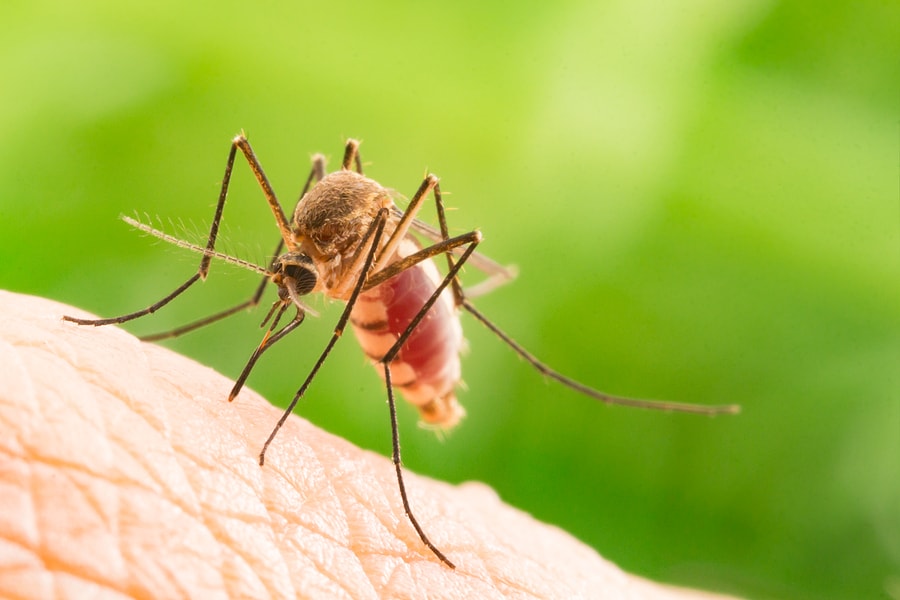
Mosquitoes thrive off heat and humidity! With summer officially here, mosquito season is in full swing, making your chances of getting bit by one of these pests very high. Mosquitoes are small and annoying and their bites can pose a serious health threat to both humans and animals. Every homeowner wants to protect their family and pets from these pests and what better way to do so with a green alternative via the In2Care Mosquito Trap!
How In2Care Works
In2Care is a perfect solution to help prevent and eliminate mosquitoes throughout your home and property. This trap is unique as it lures in mosquitoes with a special green treatment inside the trap. Once mosquitoes enter the trap, the treatment transfers to the mosquito’s legs, where it is then spread to other breeding sites, like standing water or flower saucers. The spread of the treatment eliminates adult mosquitoes but also prevents the larva mosquitoes from developing further.
The In2Care Benefits
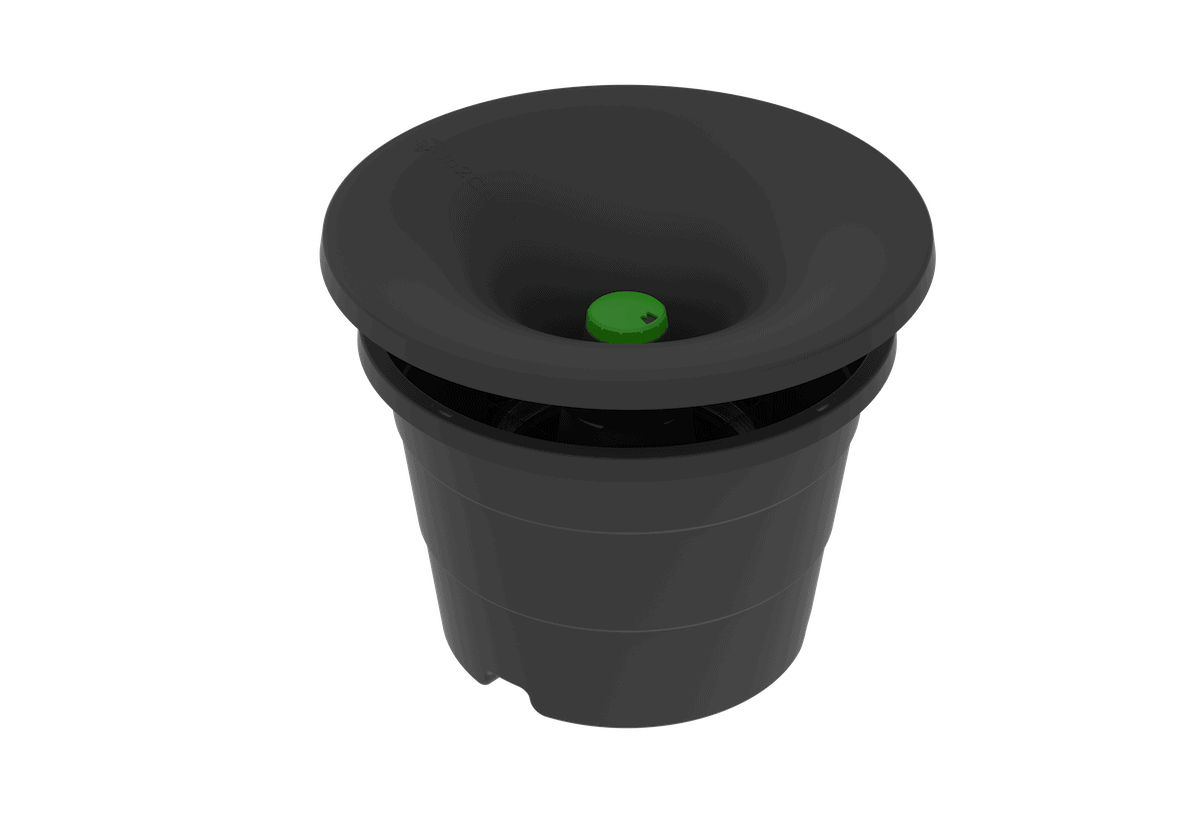
This trap is perfect for every residential home looking for a new, alternative green mosquito control method. Instead of spraying product around your yard, the trap is placed in a shaded, vegetated area where mosquitoes are likely to breed. The green treatment used to eliminate mosquitoes does not target beneficial pests and remains environmentally and pet friendly. In2Care provides your property:
Instead of constantly battling mosquitoes this summer, consider a new way in In2Care to rid mosquitoes and take back your yard!
If you’re interested in the In2Care System or would like more information, call 866-480-0947.
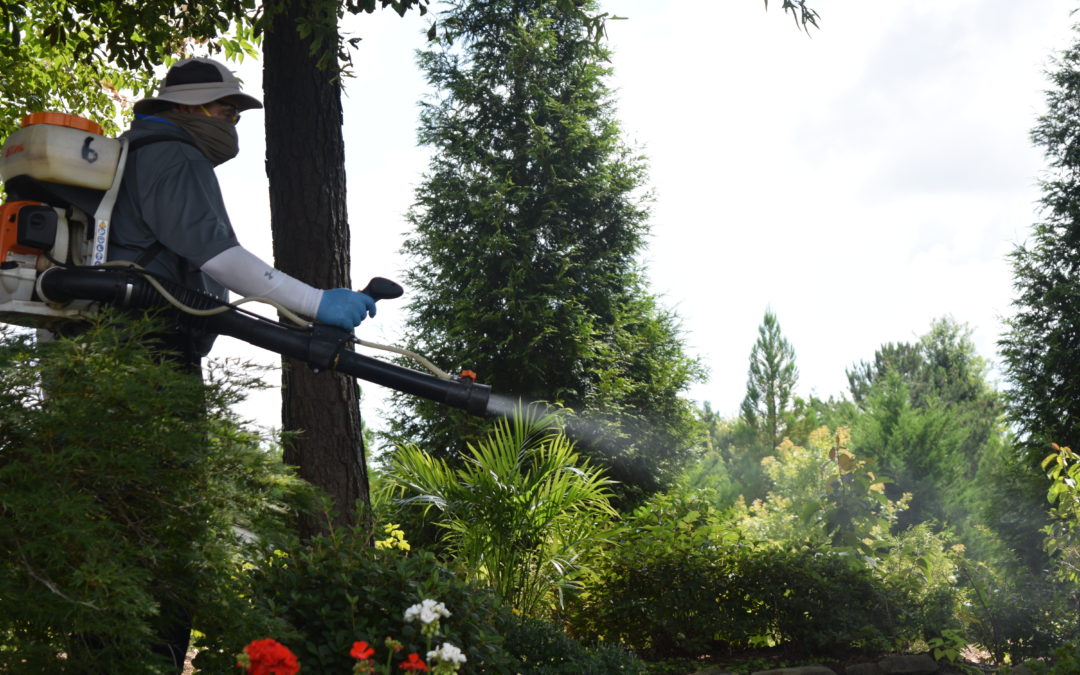
Mosquito season is right around the corner! Heat and humidity during these months combine to provide an ideal environment for mosquitoes to thrive. The season usually starts in the spring and peaks over the summer. Besides leaving behind itchy, red welts, these nuisance pests are dangerous to humans by vectoring serious diseases like Zika virus, West Nile virus, and chikungunya. Fortunately, there are several green pest control options you can utilize as an eco-friendly alternative to control mosquitoes. Here are 3 steps you can take for green mosquito control.
The first step to controlling mosquitoes is identifying and eliminating what attracts them in the first place. Mosquitoes will come around in search of two things: nesting sites and resting sites.
Where do mosquitoes breed? Every species of mosquito lays its eggs in water. While the type of water source may vary between species, it only takes a minute amount of water for mosquitoes to hatch and develop. Get rid of any potential breeding sites by:
Once mature, adult mosquitoes will often rest in shady areas that are protected from the wind. Some common resting sites include trees, shrubs, potted plants, patios, and front entryways.
Any time you can protect yourself from mosquito bites you should. Prevent mosquito bites by:
Yards and climates vary across the region so the effectiveness and longevity of mosquito treatments will vary from home to home. Regardless of where you live or what kind of home you have, a green mosquito control program can be effective at helping control mosquito populations. Green mosquito control utilizes eco-friendly products that are just as effective as traditional products.
A complete green reduction program includes monthly mosquito treatments during mosquito season. Green treatments use products that are derived from flowers and botanicals and area only applied to the areas where they are needed instead of over the entire yard. They are effective at reducing both adult and larvae populations.
The green mosquito reduction program includes an inspection to identify resting and nesting sites; larvacide and adulticides to target all aspects of the population; source reduction and elimination by removing any areas of standing water; and a service guarantee where they will come back between treatments if needed, usually at no cost.
If you have a problem with mosquitoes or any other pests, contact a professional pest control company who can provide you with a thorough inspection and the most up to date traditional pest control and green treatment options available for you.
Termites: Prevent Before They Infest!
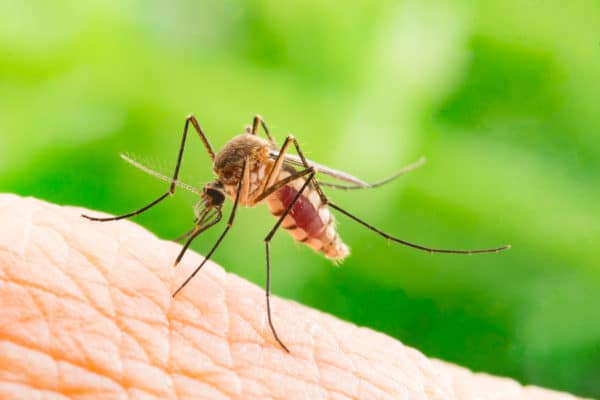
Mosquitoes are one of the most common pests active during the spring and summer months. While most consider them a nuisance with their incessant buzzing and itchy bites, mosquitoes can also be dangerous to both humans and pets, transmitting serious diseases like Zika and West Nile to humans and heartworms and encephalitis to pets. Peak season for mosquitoes is from April to October. What methods for mosquito control are out there? How long do they last? Find out the answers to these questions and more below.
Mosquitoes will begin to lay eggs or previously laid eggs will begin to hatch when the temperature outside consistently reaches 50 degrees in the evenings. Peak mosquito season typically runs from April through October.
There are several benefits included in a mosquito treatment. Green mosquito treatments use products derived from flowers and bacteria and are applied only to areas needed, reducing adult mosquito populations as well as mosquito larvae. A typical mosquito treatment program may include a property inspection to identify potential mosquito breeding and resting areas in and around your home and yard; a service guarantee to come back in between scheduled visits if needed at no charge; mosquito source reduction by eliminating areas of standing water such as clogged gutters, containers, bird baths, etc; larvicide mosquito treatments to target those potential breeding sites; and adulticide mosquito treatments to target adult mosquito resting areas like shrubs, ivy, weeds, small trees, shaded areas.
Several factors affect the longevity of a mosquito treatment including weather, environment, application technique and the mosquito population levels around your home. A typical mosquito treatment lasts about 30 days. After this time, the material begins to degrade making your mosquito protection less effective. It is recommended that mosquito treatments should be applied monthly for the duration of mosquito season.
In general, if your property is less than 1 acre the mosquito treatment will be applied to the entire yard. If your property is greater than 1 acre, technicians will usually start with a treatment area of about 1 acre and progress as needed. The treatment will specifically be applied to the perimeter of the yard in areas of foliage, woods, and shaded damp areas. These are the areas where mosquitoes prefer to rest during the day. This creates the largest impact while using the least amount of product.
Mosquito bites are itchy and sometimes painful; they can also be dangerous as they can transmit serious diseases to both humans and animals. There are several steps you can take to prevent mosquito bites. Use insect repellent any time you will be outside. This repellent should include one of the following ingredients: DEET, Picaridin, IR3535, oil of eucalyptus (OLE), para-menthane-diol (PMD), or 2-undecanone. Cover up with long sleeves and pants. Tuck pants into your shoes if possible. Treat boots, pants, socks, and even tents with permethrin. Use air conditioning or window and door screens to keep mosquitoes out of your home. Make sure screens are in good repair with no holes or tears. Cover cribs, strollers, and carriers with mosquito netting. Once a week empty, scrub, turn over, cover, or throw out any items that can hold standing water such as buckets, planters, toys, pools, birdbaths, flower pots, and trashcans.
Mosquito bites are not only painful, they can cause severe reactions if you have a mosquito allergy. There are several things you can do to treat mosquito bites. First and foremost, don’t scratch the bite. Scratching may temporarily relieve the itching but it also continues to irritate and inflame the skin and can lead to infection. Wash the bite with cool water and soap instead. Try calamine lotion or Caladryl on the bites; there are also several new products containing cortisone or other antihistamines such as AfterBite that can help relieve itching. Use a cold compress or ice pack on the bite to help reduce inflammation. Try an oral antihistamine like Benadryl to help with itching. These take longer to work but can also provide longer relief.
Home Remedies To Keep Snakes Away
Keeping Wildlife Out This Spring
Do I Really Need Termite Protection?
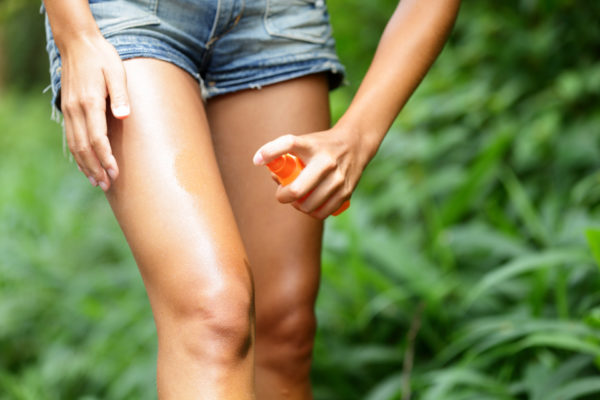
Summer has arrived and with it comes warmer weather and more outdoor time. While we want to enjoy picnics and parties outside, mosquitoes will often make us the life of their party, feasting on us as unsuspecting victims. Mosquitoes are annoying as they buzz around us and can be a major nuisance if they get inside your home. They can also be dangerous, transmitting serious diseases like West Nile virus and Zika. What can you do to make your summer more enjoyable sans mosquitoes? Check out these 6 tips to prevent mosquitoes this summer.

Improving the health of your home offers major benefits to your family. Reduce waste, minimize exposure to chemicals & toxins, breathe healthier, lower your risk for sickness, and improve the overall health of your environment with these 10 healthy home tips.
Most plastics contain chemicals that are added for functionality. Some of these chemicals have been proven to be toxic. It has also been proven that some of these chemicals can leach into food and liquids that are contained in the plastic. While it is unlikely that one can completely avoid plastic altogether, it is important to limit its use with items that are likely to come in contact with the mouth. Most plastics are marked with numbers which indicate the type of plastic used to make the item. Plastics marked with #3 (or “PVC”) contain a toxic chemical that was recently banned in 2009. Plastics marked with #7 (or “PC”) are usually clear and rigid (e.g. food containers and water bottles). These containers have BPA which can leach into food and water that is in the containers. It is best to avoid plastics with these numbers if at all possible. Glass and ceramic containers are a much healthier option than plastic. However, if glass or ceramic are not available, plastics marked with a #1, 2, 4, or 5 do not contain BPA and are much safer choices than the other plastics mentioned above. Don’t heat plastic containers in the microwave as this releases the chemicals in the plastic. If you can, wash them by hand; if you do put them in the dishwasher, put them on the top shelf as the water is cooler there.
Most canned foods are lined with the same chemical, BPA, that was mentioned in tip #1. Try using fresh or frozen foods instead of canned when possible. When buying fresh foods, especially vegetables, try to buy organic as these foods are grown with less pesticides. Check to make sure your salt is iodized; it helps to maintain thyroid function. Check the mercury content of fish; some fish are considered mercury-rich. It is best to avoid these fish as much as possible, especially if you are pregnant. Use a filter when drinking tap water to remove contaminants and use a stainless steel, reusable water bottle.
Avoid non-stick cookware and kitchen utensils if at all possible. If you must use them, try not to overheat them as this converts the toxic particles into gas form and allows them to release into your food. Try to use stainless steel or cast iron cookware and wooden or stainless steel utensils instead.
Many cleaning products contain chemicals that have been proven to lead to asthma, cancer, and other health issues. Check the ingredients on your cleaning products and opt for “green” products instead as these contain less chemicals than traditional cleaners. Most of these cleaners are marked with a label indicating they are “green certified.” If you must use traditional cleaners, check the label for diluting instructions and use the least amount as necessary to do the job. Consider using natural alternatives to cleaners, like vinegar diluted with water and baking soda, which is a great alternative to window cleaner. Mix baking soda and water to form a paste which can be used to clean ovens and toilets. Dilute vinegar in a bucket of water to mop floors. Green is the way to go when it comes to pesticides, as well. The saliva, feces, and shedding body parts of cockroaches have been proven to trigger both allergies and asthma. A green pest control program gets rid of pests while maintaining the lowest environmental impact possible, and it’s pet and family-friendly! Mosquitoes transmit a multitude of diseases like Zika, West Nile, malaria, dengue and more. Reduce mosquito bites and lower your risk with mosquito bite prevention and a green mosquito control program – guaranteed to reduce the number of mosquitoes and mosquito breeding sites around your home without harsh chemicals.
Allergies and asthma can also be triggered by pet dander, dust, and other irritants commonly found in your home. Think of your home as an organism and your heating & cooling systems as the breathing mechanisms. The system supplies conditioned air but at the same time it pulls that same air back into the return. This means that the air is being constantly recycled and is picking up particulates from pets, cleaning products and what you cooked for dinner. It’s no wonder it’s polluted. The first step to getting rid of the dust in your home is to dust and vacuum often. Vacuum cleaners with HEPA filters are now available that trap and collect more dust and irritants than a regular vacuum cleaner. Follow this up with wet mopping your floors often, as well. Consider investing in an air purifier for your home that’s installed directly onto your current heating and cooling system, making the air inside your home cleaner, fresher and healthier for the whole family.
Check the age of your home. If it was built prior to 1978 there is a good chance the paint contains lead. Repainting with low VOC paints can reduce your exposure to toxic lead. Does your furniture contain foam? Many foam stuffed items such as mattresses are treated with toxic flame retardants. Check the items carefully to make sure the foam is not exposed and repair or replace if they are. Check your light bulbs. Compact fluorescent light bulbs contain toxic mercury which can be harmful to you and your family. Handle them with care, especially when disposing of them. Wooden furniture such as picnic tables and swing sets, as well as wooden decking on the exterior of your home can contain arsenic if built before 2005. Replace with items built after 2005 or seal them to reduce your exposure. Check your crawl spaces in your home. One of the best ways to increase energy efficiency, prevent mold growth, and control pests is to enclose your crawl space. This could save you up to 18% on utility bills! In addition to the crawl space, you should also check the insulation in your attic to see if it’s adequate. If not, consider adding a green insulation product like TAP Insulation which can reduce the amount of energy needed to heat and cool your home, conserving energy while significantly reducing energy bills.
Since we don’t always know what makes up the fragrances of our personal products, consider buying fragrance-free. Does your toothpaste contain fluoride? Fluoride is toxic to children under the age of 2. Use fluoride-free toothpaste for your kids. Check your shower curtain; if it’s vinyl, throw it out. And regardless of the material it’s made of, shower curtains should be left outside for several days before installing in your home. Avoid using products that aren’t absolutely necessary such as hair spray, detanglers, dryer sheets, and fabric softener. Save money while reducing your family’s exposure to toxic chemicals!
Many pests can enter your home in ways that you would never think of. Seal any openings that could be potential pest entry points – utility openings where wires or pipes come into the foundation and areas around gas meters, dryer vents, and outdoor faucets. You can use caulk, expandable foam, copper mesh, or cement to seal these openings. Examine doors and windows. Be sure to seal any gaps and cracks around windows and doors that would allow pests to enter the home. You can use weather stripping or caulk to seal these problem areas. You can also fit the bottoms of your doors, including your garage doors, with rubber seals. Weather stripping can also be used to seal the bottoms of sliding glass doors. Be sure to examine your screens on doors and windows, as well. Repair any rips/tears that can be fixed and replace the screens that can’t be fixed. If you have a chimney, make sure you install a chimney cap to keep out birds, bats, and other wildlife. You can also install wire mesh over attic vents to keep out bats, squirrels, and rodents. If you have a woodpile outside, make sure to keep it at least 20 feet from the exterior of your home and elevate the woodpile if possible. Cut back overgrown landscaping 1-2 feet so they are not touching the exterior of your home. You should be able to walk the entire perimeter of your house without touching any landscaping. Lighting also attracts pests, especially around windows and doors; using sodium vapor lighting can help.
Hand washing is easy to do and it’s one of the most effective ways to prevent the spread of many types of infection and illness. Help stop the spread of germs by washing your hands often, especially during key times, such as before, during, and after preparing food; before eating food; before and after caring for someone who is sick; before and after treating a cut or wound; after using the bathroom; after changing diapers; after blowing your nose, coughing or sneezing; after touching an animal, animal food, or animal waste; and after touching garbage. If soap and water are not available, use an alcohol-based hand sanitizer that contains at least 60% alcohol.
Keep a distance between flammable objects (papers, curtains, plastics, etc.) and fire sources (oven, stove top, portable heater, etc.). Keep electrical appliances wrapped and away from water. Install smoke detectors, check them regularly, and replace the batteries at least once a year. Avoid overloading outlets and extension cords. Keep fire extinguishers handy and know how to use them.